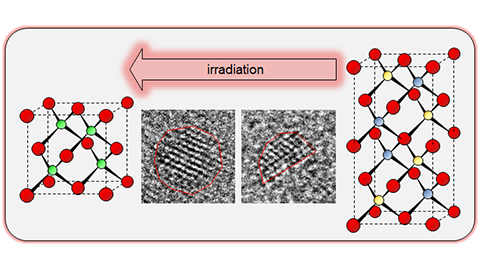Light control the ZAIS nanocrystals

While it is important to reduce both the size and energy consumption of photonic devices to facilitate effective integration, successful fabrication of a nanophotonic device requires control of its size to ensure that the quantized energy levels are resonant to facilitate efficient optical near-field interaction. Defects or impurities must also be removed to reduce the spectral width and to obtain higher crystal quality. ZnS–AgInS2 solid-solution (ZAIS) nanocrystals are promising materials for nanophotonic devices in the visible region because of their low toxicity and long decay times for emissions. This paper reports a technique we developed for photo-induced synthesis to control the size and composition of the ZnS–AgInS2 (ZAIS) nanocrystals.
This method successfully decreased the defect levels, as well as the size and size variance of ZAIS nanocrystals by introducing light irradiation and controlling the excitation wavelength during synthesis. Photoluminescence measurements and transmission electron microscope analysis confirmed the reduction of the photoluminescence spectral width and corresponding reduction in nanocrystal size distribution. Furthermore, these results indicate that the synthesized ZAIS nanocrystals had higher crystallinity; thus, higher energy-transmission efficiency can be expected from nanophotonic devices.
More detalis
- Takashi Yatsui, Fumihiro Morigaki, and Tadashi Kawazoe, “Controlling the optical and structural properties of ZnS–AgInS2 nanocrystals using photo-induced process,” Beilstein Journal of Nanotechnology, Volume 5, October 2014, pp. 1767–1773.